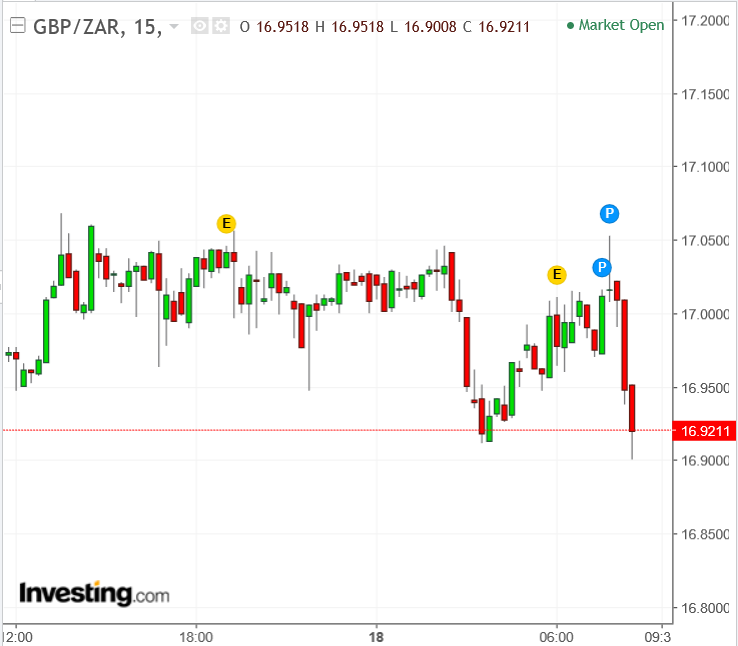South African Rand Rises Marginally After Reserve Bank Leaves Rates Unchanged

The South African Reserve Bank (SARB) left base interest rates unchanged at 6.75% at their meeting on Thursday.
SARB governor Lesetja Kganyago said inflation was subdued and the bank had revised down its Q1 2018 inflation forecasts to 4.4%, however, official forecasts remained within the SARB target range if slightly below the midpoint, and it saw inflation rising to a higher 5.5% level thereafter.
The Reserve bank also kept the Prime lending rate, which is the benchmark rate at which banks lend to the public, at 10.25%.
During the press conference, Kganyago said despite the fall in inflation risks to the economy, including the political outlook and the credit rating agency assessment in February.
Rand has appreciated by 13.1% versus the Dollar since the last SARB Monetary Policy Committee (MPC) meeting.
The MPC discussed the risk of a Moody's credit rating downgrade in February.
"The challenge for the government will be to find ways to fund the budget using growth-positive policies," said Kganyago.
The credit rating revision is a negative risk for the Rand.
Economic growth slowed in Q4 but remained positive, and the SARB revised up its forecast for overall growth in 2017 from 0.7% to 0.9%; while forecasts for 2018 and 2019 were adjusted to 1.4% and 1.6% respectively, up from 1.2% and 1.5% previously.
Forward guidance is now for two rather than three 0.25% rate hikes by the end of 2019, with the third now only a "marginal call."
Five members of the MPC voted for to keep rates unchanged, whilst one voted for a reduction of 0.25%.
The Pound-to-Rand fell on the news from a pre-release of 17.0229 to 16.9583 at the time of writing.

Get up to 5% more foreign exchange by using a specialist provider by getting closer to the real market rate and avoid the gaping spreads charged by your bank for international payments. Learn more here.
Meeting Preview
Arguably the most important domestic event for the South African Rand this week is the meeting of the South African Reserve Bank (SARB) on Thursday, January 18, at 13.00 GMT, when it will announce its decision on whether or not to alter the official interest rate level in the country.
Financial conditions in South Africa have improved since November with the Rand appreciating notably in the wake of the election of Cyril Ramaphosa as leader of the ANC. The rising Rand tends to push down the cost of imports and lower inflation.
With the spectre of inflation fading somewhat, analysts had forecast a possibility that the SARB might cut interests in order to lower lending costs and boost economic growth without fearing another flareup in inflation.
Interest rates are a major driver of currencies in a world of fluid capital where investors transfer capital to countries with high interest rates where they are likely to get the highest returns, and this in turn impacts on the demand for currencies.
At 6.75% South Africa has a particularly high interest rate relative to other major economies and this provides the Rand with a key source of support, provided South African debt remains of investment grade status of course.
Lowering the interest rate is therefore a likely source of Rand weakness, while raising the interest rate increases the attractiveness of South African debt and other interest rate-linked assets.




